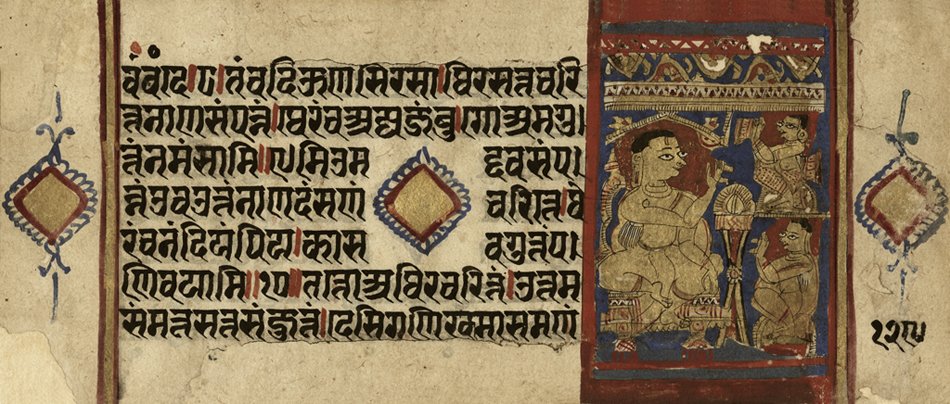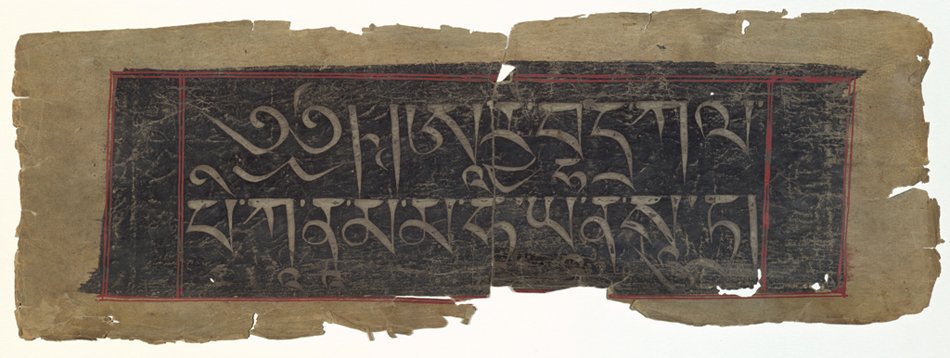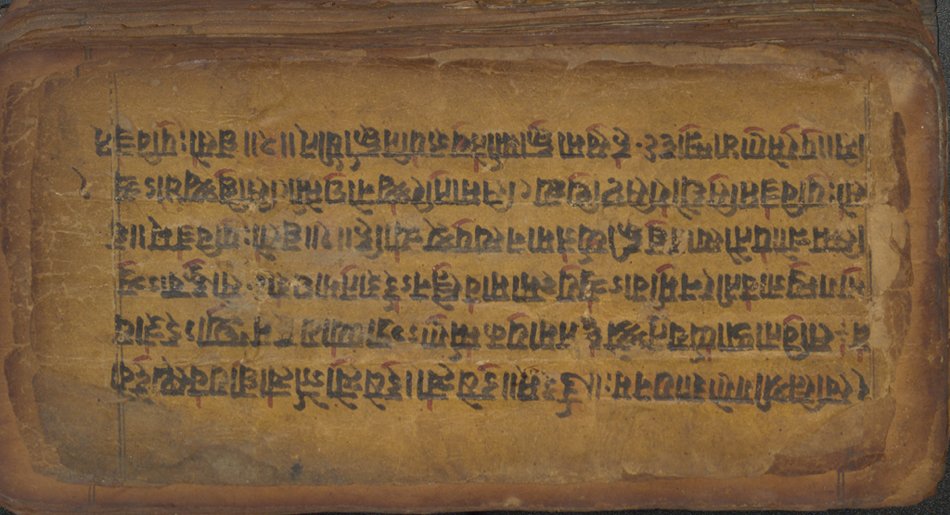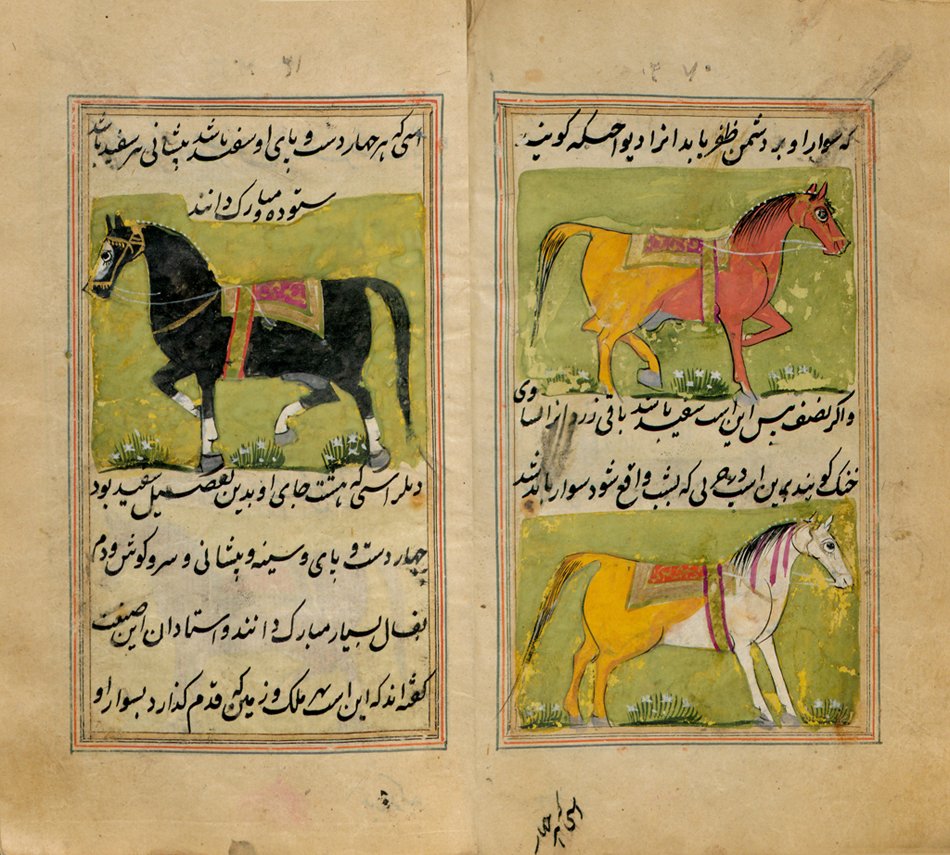Glimpses of the Past
South Asian manuscript culture is one of the richest and most diverse in the world. Featured here are treasures from India's scribal past. Manuscripts were written on a variety of materials, including birch bark, palm leaf, and paper. They came in many sizes and formats, two of the most common being the oblong pothi format and the Western codex.
The pothi format was dictated by the shape of the palm leaf. The leaves were cut to size and incised with a stylus. By rubbing ink into the incisions, the writing was made visible. The leaves were tied together by a cord that was strung through one or two holes, as can be seen here in the small palm leaf manuscript of a Sinhalese medicinal text. The large gilded manuscript of a Buddhist monastic text is typical of the Burmese tradition. It is held together by small sticks put through the holes in the folios.
The pothi format was retained for religious texts even after the introduction of paper to India in the thirteenth century. In the paper folio from an illustrated Jain Kalpasutra, the stringhole is replaced by a decorative emblem. The Sanskrit ritual text from the White Yajurveda was meant for recitation: the notations in red ink are Vedic pitch accents.
Also on display are two rare Tibetan Buddhist manuscripts. The black paper is created by applying a lacquer made of animal brains, powdered soot, and cooked hide glue, which is then burnished to create a lustrous surface.
Mughal manuscripts are famous for their lavish illustrations and illumination. Two exquisite eighteenth-century codices shown here are the Razm-nama (Book of War), a Persian translation of the Mahabharata, and an Indo-Persian Faras-nama, or treatise on horses.
The more recent Pashto manuscript combines plain calligraphy with surprisingly fine illustrations emulating Persian Safavid style. The illustrations appear to be a later addition and bear no relation to the text, a commentary on an Arabic logic text.
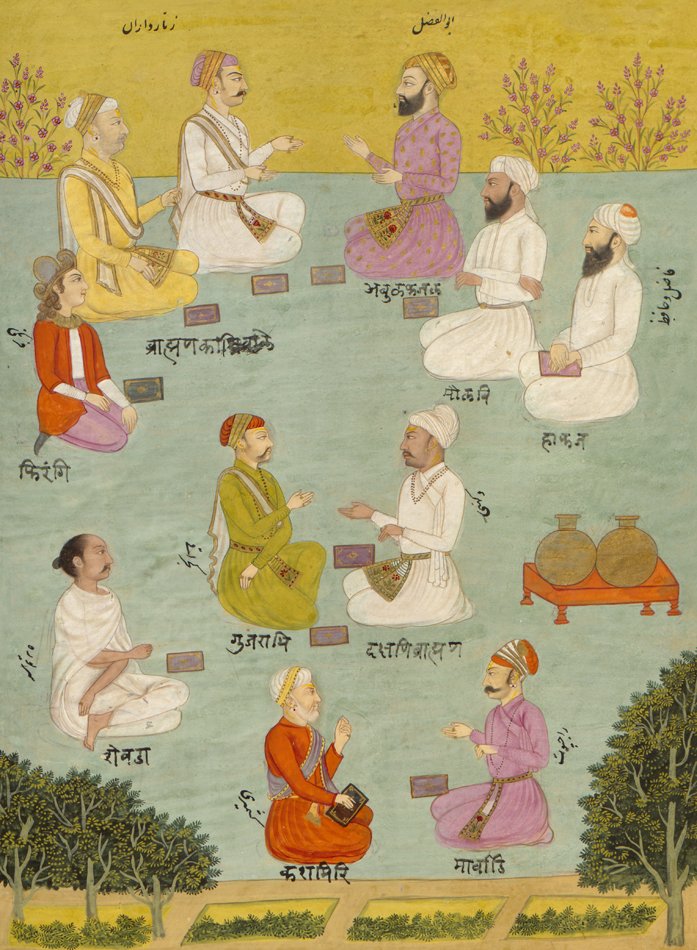
Ink opaque watercolor and gold on paper
Persian [mid-18th c.]
Codex Manuscript Collection
A translation of the Sanskrit Mahabharata
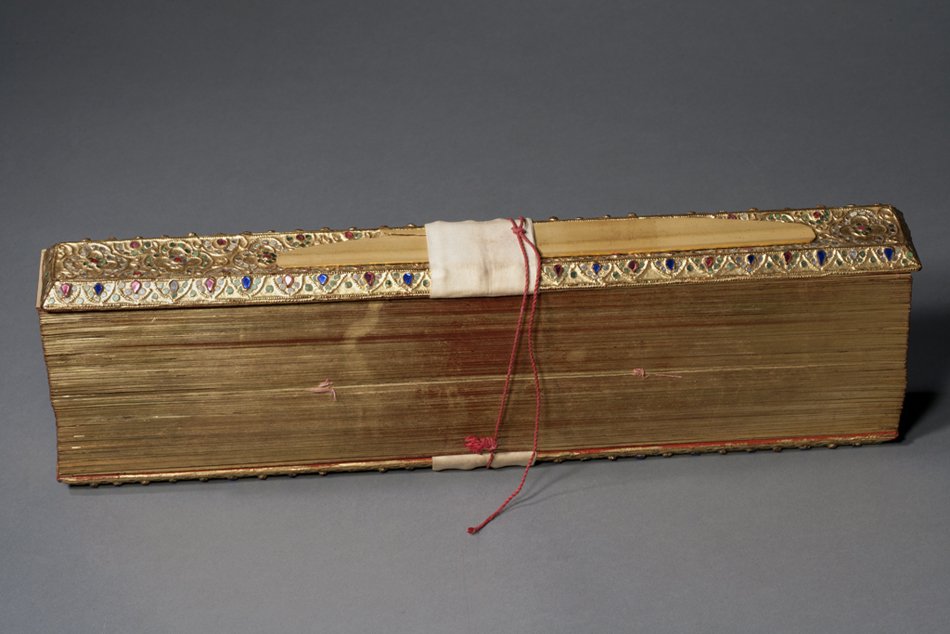
Buddhaghosa (5th c.)
Palm leaf manuscript, embossed cover with glass inlay
Burma, [1888]
Regenstein Library, General Collections
Pali in Burmese script
This is a text of Buddhist monastic law. The bookmark (gabi-dan) attached to the embossed cover states that the manuscript was a donation by one Ko Po and his wife.
